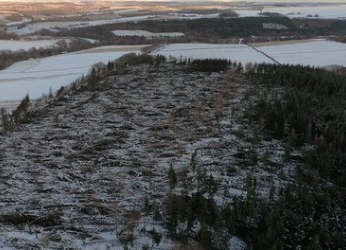
A new citizen science application has been launched to identify potential areas of windblown conifer trees following the devastating impact of Storm Arwen.
Forest Research is working with Confor, the Forestry Commission and Scottish Forestry to fully assess the impact the storm has had on the nation’s forests and woodlands.
Earth observation data has been used by Forest Research to identify potential areas of windblown conifer trees across England and Scotland using a novel machine learning algorithm. The project partners are today launching a citizen science application for foresters, land-owners land managers to view, validate and add to this data. This will help us understand what is required to clear up the damaged trees and help improve future versions of the data algorithm to aid in the response to future storm events.
We invite submissions via the dedicated citizen science portal or an offline capable mobile application in the field, with a closing date of 23rd January 2022.
Only professionals who have considered the risks involved with windblow should attempt to map it in the field.
Please visit the website: https://windblow-assessment-forestergis.hub.arcgis.com/
Photo credit: Hamish Oliphant
Forest Research has been involved in a project focusing on efforts to improve inclusivity in biosecurity practices by exploring how to integrate different knowledge systems into mainstream decision-making.

Forest Research has released the latest Accredited Official Statistics on woodland and forestry in the UK.
New research reviewing natural processes as a method for woodland creation has been published by Forest Research.
Forest Research has been involved in a project focusing on efforts to improve inclusivity in biosecurity practices by exploring how to integrate different knowledge systems into mainstream decision-making.

Forest Research has released the latest Accredited Official Statistics on woodland and forestry in the UK.
New research reviewing natural processes as a method for woodland creation has been published by Forest Research.